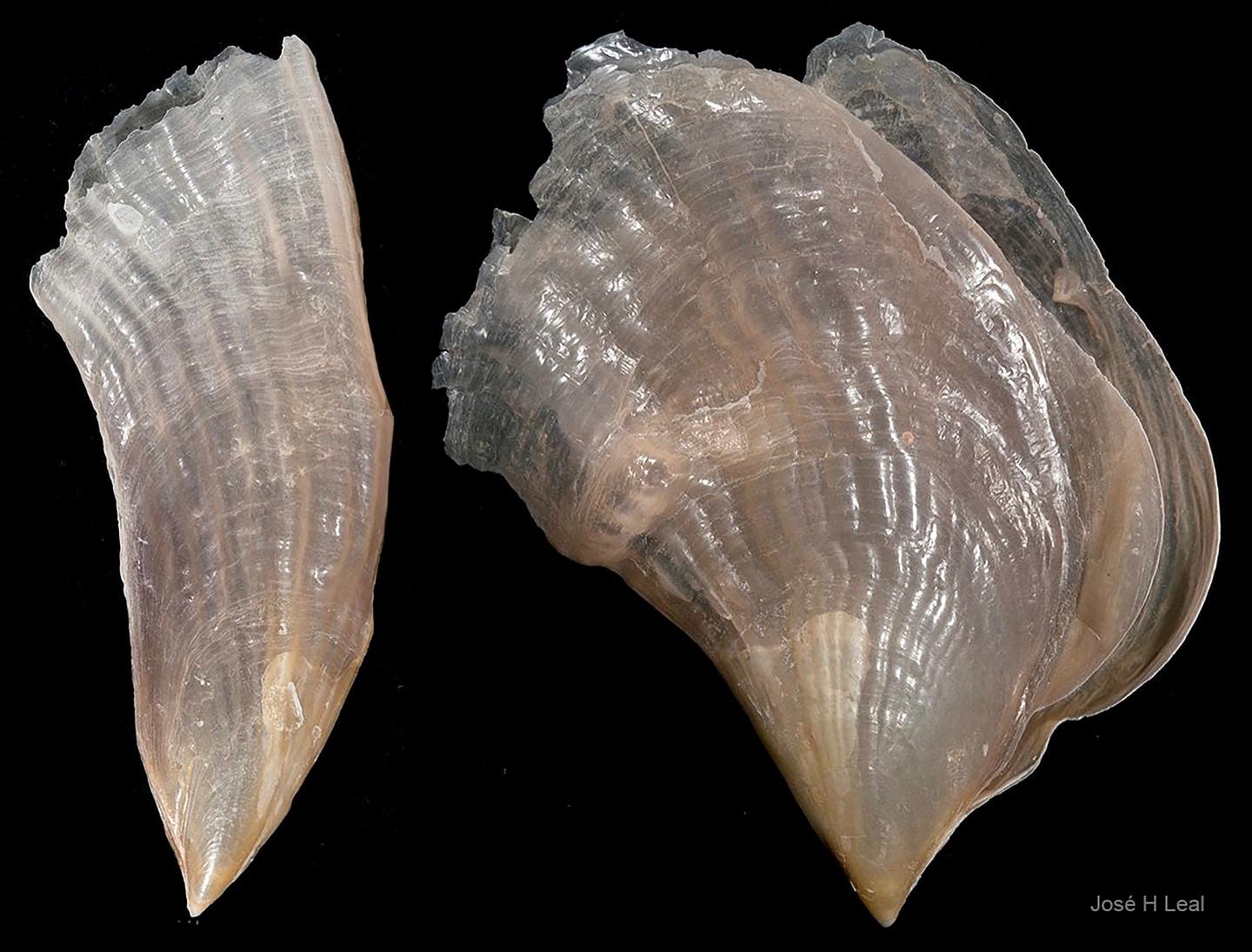Summary:
1. The Baggy Pen Shell, scientifically known as Streptopinna saccata, is a fascinating bivalve species.
2. This species is found in the warm waters of the tropical Indian and western Pacific oceans.
3. Baggy Pen Shells have unique and unpredictable shapes, conforming to the surrounding hard structures.
4. The byssus, a bundle of fibers, helps the pen shell attach itself to rocks or shell fragments.
5. The shell of a living pen shell is flexible, but it becomes rigid and brittle after the animal dies.
Today is Baggy Pen Shell Day! Let us dive into the intriguing world of the Baggy Pen Shell, scientifically known as Streptopinna saccata. These magnificent creatures inhabit the warm waters of the tropical Indian and western Pacific oceans, residing in the sandy bottoms. Prepare to be amazed by their distinct characteristics!
One of the most captivating aspects of Baggy Pen Shells is their ability to grow into unexpected shapes. The genus Streptopinna derives from Greek and means “twisted.” This refers to the peculiar twists and turns these shells can take as they conform to the shape and position of other hard structures in the sand around them. Whether rocks, coral skeletons, or empty shells, each Baggy Pen Shell is a unique masterpiece.
Imagine strolling the ocean floor, encountering a mesmerizing collection of Baggy Pen Shells, resembling a gallery of abstract sculptures. The unpredictable shapes and patterns create a wondrous sight, capturing the imagination of scientists and nature enthusiasts alike. Such diversity is a testament to nature’s ingenuity, forever surprising us with its creations.
While the shell of a living Baggy Pen Shell possesses some flexibility, it transforms the animal’s demise. Upon death, the shell gradually becomes hard and brittle. This fascinating adaptation serves as a protection mechanism, preserving the shell’s structure over extended periods.
In the early stages of a Baggy Pen Shell’s life, it attaches itself to a small rock or shell fragment through a remarkable feature called the byssus. The byssus consists of a bundle of fibers that act as anchors, securing the shell to its chosen substrate. These fibers provide stability to the growing shell and allow the animal to withstand the forces of ocean currents. Such adaptations are crucial for the survival of these remarkable creatures.
Considering the uniqueness and adaptability of the Baggy Pen Shell, it is vital to appreciate their role in the delicate balance of marine ecosystems. Just as artists contribute to the world’s beauty, these shells contribute to the biodiversity and richness of our oceans. They provide habitat and serve as nurseries for numerous marine organisms, impacting the overall health and stability of underwater ecosystems.
Take a moment today, on this special Baggy Pen Shell Day, to reflect on the wonders of nature. Marvel at the twists and turns, the intricate designs, and the ability of these shells to adapt and survive. Let their story inspire a deeper appreciation for the intricate and interconnected world we are fortunate to be a part of.
We are but spectators in this grand spectacle of life, and by understanding and preserving the beauty and diversity of nature, we ensure a brighter future for generations to come. Let us celebrate the Baggy Pen Shell and all the incredible creatures that inhabit our natural world.
For more information on Baggy Pen Shells and other fascinating marine life, explore the resources available at ShellMuseum.org. Go forth and embrace the wonders of our oceans!
*****
Source Description
Today is Baggy Pen Shell Day! Streptopinna saccata inhabits the warm waters of the tropical Indian and western Pacific oceans, living in sandy bottoms. No two Baggy Pen Shells are alike: they grow into unexpected shapes (the strepto-part of the genus name means twisted in Greek), conforming to the shape and position of other hard structures (rocks, coral skeletons, empty shells) in the sand around them. As with some other species of pen shells, the shell of the living bivalve is slightly flexible, but becomes hard and brittle after the animal dies. Early in life, a pen shell attaches itself to a small rock or shell fragment via a bundle of fibers called the byssus. More? ShellMuseum.org


